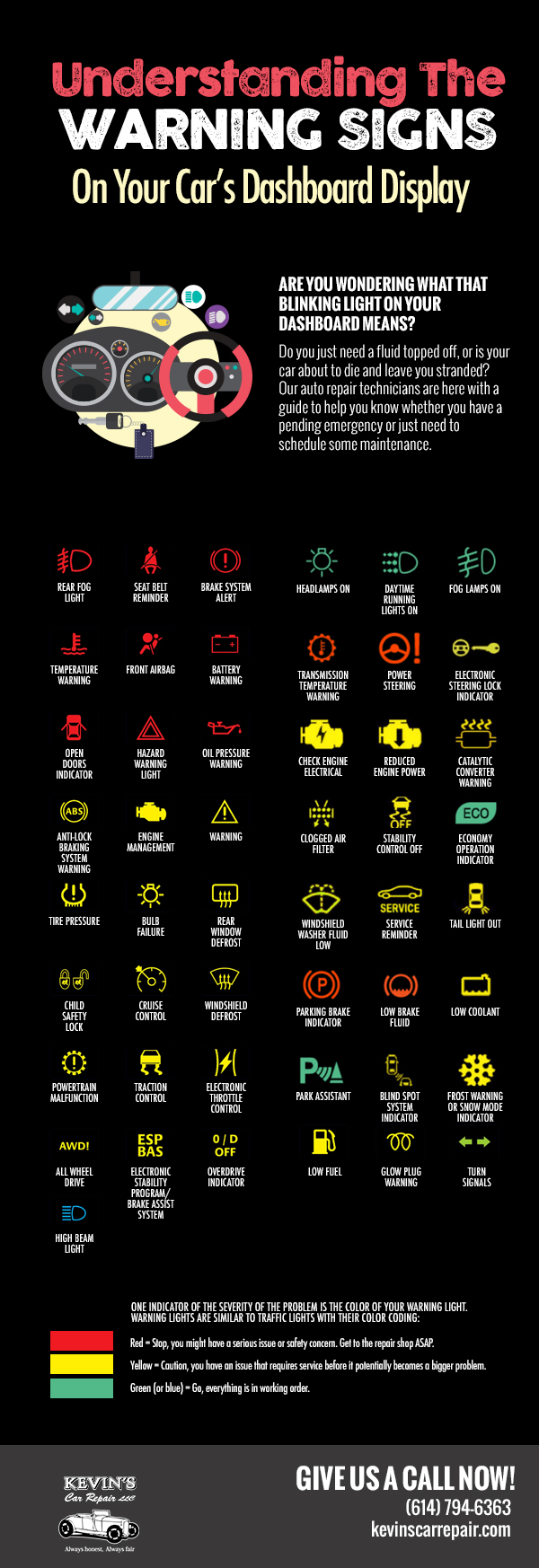Understanding The Definition Behind Your Automobile'S Warning Lights: A Comprehensive Look
Understanding The Definition Behind Your Automobile'S Warning Lights: A Comprehensive Look
Blog Article
Authored By-Lauritsen Shepherd
When you lag the wheel, those glowing warning lights on your dashboard can be a bit complicated. Do you know what they're trying to inform you concerning your automobile's health and wellness? Comprehending the significance of these lights is vital for your safety and the durability of your automobile. So, the next time one of those lights turns up, would not you intend to analyze its message precisely and take the essential steps to resolve it?
Common Warning Lights and Interpretations
Determine typical warning lights in your vehicle and understand their meanings to guarantee safe driving.
The most typical caution lights consist of the check engine light, which signifies problems with the engine or emissions system. If this light begins, it's important to have your automobile inspected quickly.
The oil pressure warning light indicates low oil pressure, calling for instant interest to avoid engine damages.
A flashing battery light might recommend a damaged billing system, possibly leaving you stranded if not dealt with.
The tire pressure tracking system (TPMS) light informs you to low tire stress, affecting car stability and gas effectiveness. Neglecting this can bring about harmful driving problems.
The abdominal light suggests an issue with the anti-lock braking system, endangering your capacity to quit quickly in emergencies.
Last but not least, the coolant temperature level cautioning light warns of engine overheating, which can cause extreme damage otherwise fixed promptly.
Recognizing these usual warning lights will certainly assist you deal with concerns promptly and keep risk-free driving problems.
Significance of Prompt Focus
Comprehending the common caution lights in your cars and truck is just the initial step; the importance of immediately addressing these cautions can't be highlighted sufficient to ensure your safety when traveling.
When a warning light brightens on your dashboard, it's your automobile's way of interacting a prospective issue that requires interest. Disregarding these warnings can lead to a lot more serious troubles down the road, compromising your safety and security and possibly costing you much more out of commission.
Source Webpage to warning lights can avoid breakdowns and crashes. For example, a blinking check engine light might suggest a misfire that, if left ignored, can cause damage to the catalytic converter. Addressing this promptly can conserve you from a costly repair work.
Likewise, a brake system warning light might signal reduced brake fluid or worn brake pads, vital elements for your safety and security when driving.
Do It Yourself Troubleshooting Tips
If you notice a caution light on your control panel, there are a few DIY troubleshooting suggestions you can try prior to looking for specialist help.
The very first step is to consult your car's guidebook to understand what the certain caution light suggests. Sometimes https://www.forbes.com/wheels/accessories/best-paintless-dent-repair-kits/ can be as basic as a loosened gas cap setting off the check engine light. Tightening the gas cap may deal with the issue.
One more usual concern is a reduced battery, which can trigger various cautioning lights. Inspecting the battery links for deterioration and guaranteeing they're protected could repair the problem.
If a caution light lingers, you can try resetting it by detaching the vehicle's battery for a couple of minutes and then reconnecting it. Furthermore, examining your automobile's fluid degrees, such as oil, coolant, and brake liquid, can help repair advising lights related to these systems.
Conclusion
To conclude, comprehending your car's caution lights is essential for keeping your vehicle running efficiently and securely. By without delay addressing these notifies and understanding what they imply, you can stay clear of pricey fixings and possible failures.
Bear in mind to consult your cars and truck's guidebook for particular details on each cautioning light and do something about it as necessary to ensure a trouble-free driving experience.
Stay informed, remain safe when driving!
